Beefmaster cattle are a type of crossbred domestic cattle raised for beef.
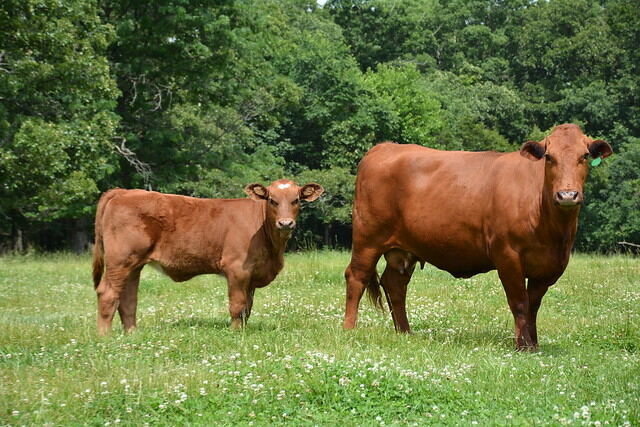
They were developed in the early 20th century by mixing the genes of three different breeds: Brahman (50%), Hereford (25%), and Shorthorn(25%).
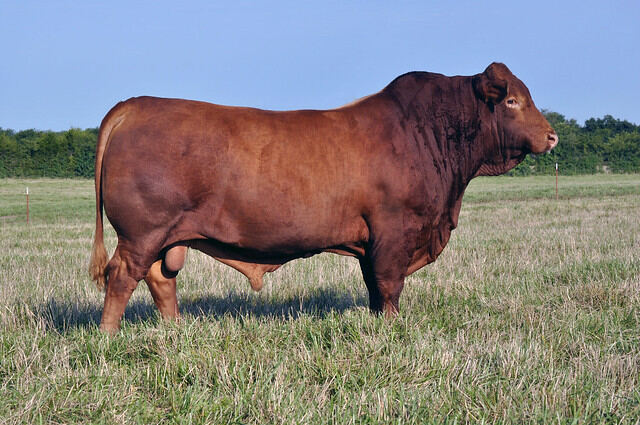
They were created by a rancher named Tom Lasater in Texas. He wanted to develop cattle that could do well in tough conditions, grow fast, and produce high-quality beef.
- The Brahman genes make Beefmaster cattle strong and able to handle hot weather.
- The Hereford genes give them good growth and fertility.
- The Shorthorn genes add to their excellent meat quality.
This cattle breed was recognized in 1954 by the U.S. Department of Agriculture as a pure breed (see refs.).
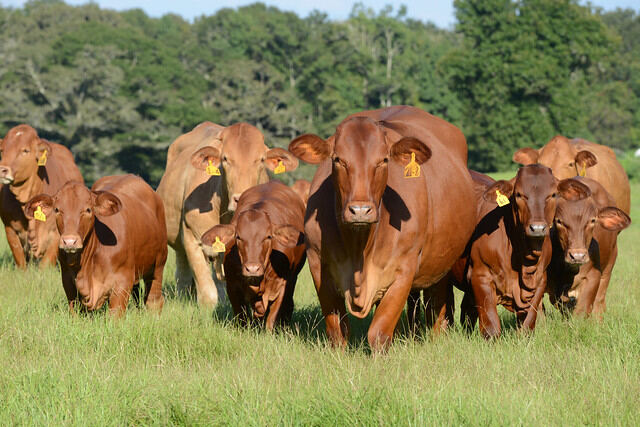
Today, they are very popular in the United States and in other countries.
These cattle breed is among the top five largest beef breeds in the United States, showing its strong presence in the beef industry.
One interesting thing about them is that they are used in breeding programs to improve other cattle breeds.
Contents
Characteristics
These cattle amaze with their physical features, including their muscular build, good size, and distinctive coat.
Color
They can have a solid red color, dun, black, or variations of brown. Some cattle also have white markings on the face and belly.
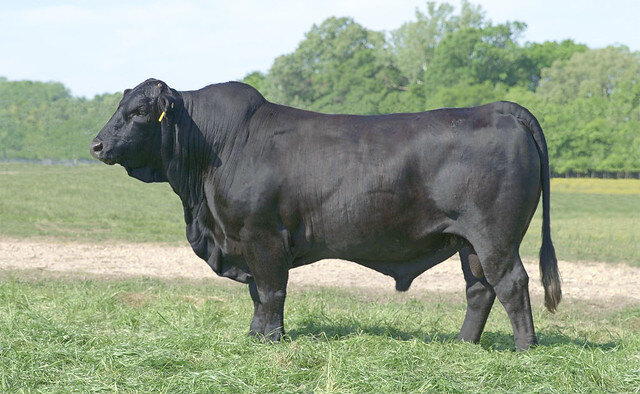
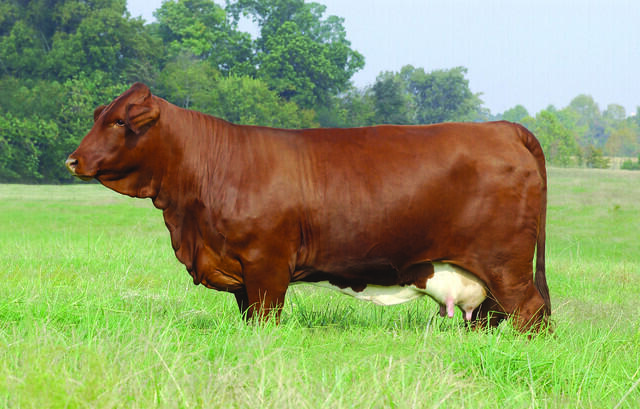
Head, Face, Eyes, and Ears
There is a difference in the head and face features between males and females in this cattle breed
In males, the head looks strong and matches the size of the body, giving them an alert appearance. They have a broad muzzle with wide, open nostrils and a good amount of space between the eyes. The ears are slightly long, level, or slanted downward in line with the head.
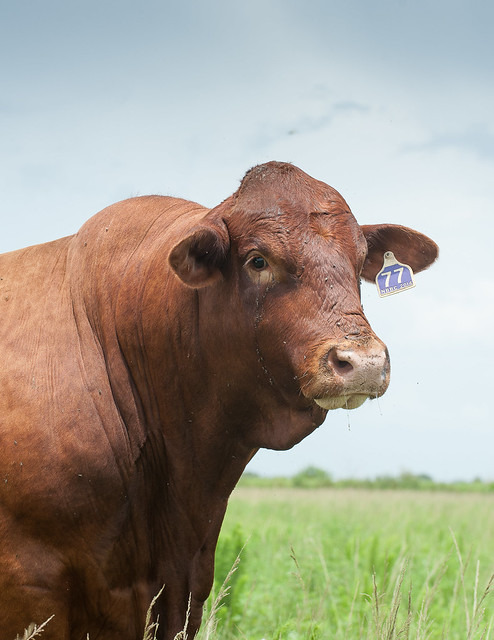
In females, the head looks feminine and matches the size of the body, giving them a refined appearance. They have a smooth jaw and throat area, along with a broad muzzle and wide, open nostrils. Their heads are balanced and avoid extremes, like being too long and narrow or too short and wide.
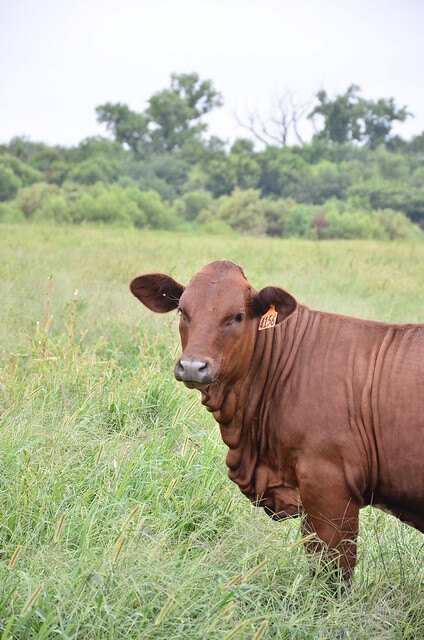
Both males and females usually have large, round eyes with dark coloring around the cornea.
They do not have white in the eyeball or Zebu-style heads with outward-curving nose ridges or dish-shaped faces.
Neck
In males, the neck is medium in length, muscular, and blends smoothly into the shoulders. It has a moderate crest or hump that is positioned closer to the top of the shoulders rather than the head. The dewlap is moderately developed, giving the neck a balanced appearance.
In females, the neck is moderately thin, with an angular and neat shape. It also blends smoothly into the shoulders and shows clean development of the dewlap, adding to their refined and feminine look.
Shoulders & Forearms
This cattle has well-developed shoulders and forearms, with males showing thick, defined muscles that give them a masculine appearance.
Females have smoother and moderately muscled shoulders that blend seamlessly into the rest of the body.
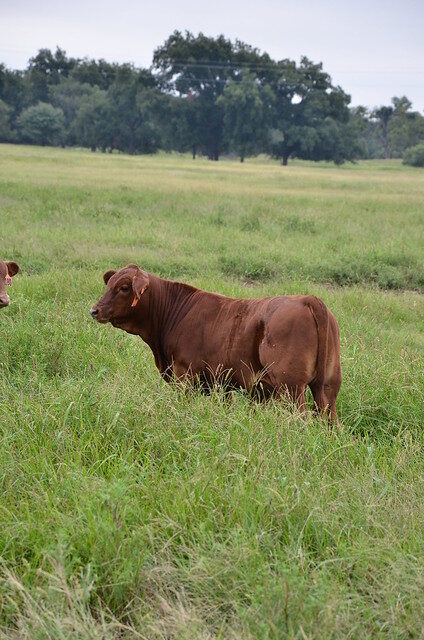
Chest
This cattle breed features a broad and wide chest floor, along with a deep heart girth that offers ample capacity in both males and females.
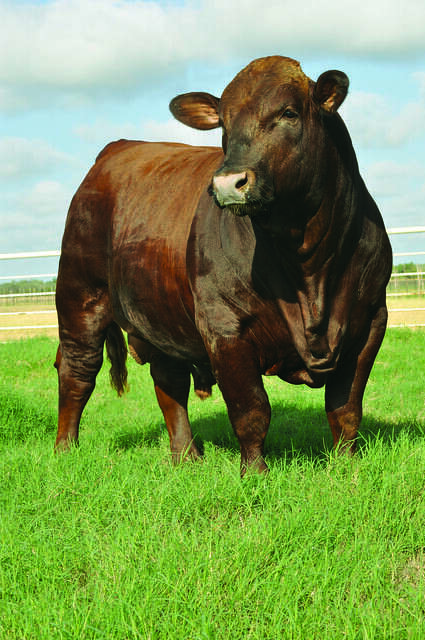
Back
The back is naturally thick and strong in both males and females, with good overall structure. The ribs are well-arched and extend nicely from the backbone, giving the body good depth and enough space for strength and capacity.
Hindquarters
The tail connects smoothly to the body. The rump is long, evenly thick, and lies flat, forming a square shape from the hooks to the pins in both males and females.
Legs
The legs, in both males and females, are of a length that suits the animal’s size. They are strong and well-built, straight, properly positioned, with good flexibility in the hock and clean, well-defined joints.
Sheath
The sheath in males is of a reasonable size, with a small to medium opening and a properly angled attachment.
Vulva
The vulva is moderately sized, well-shaped, and show signs of Bos Indicus influence.
Teats
The teats are moderate in size and evenly placed.
Coat and Skin
In warmer areas, the coat stays short, straight, and sleek, while colder winters bring slightly longer hair. The skin is soft and loose.
Size
These cattle have a medium to large size.
They can have an average height of 5 to 5.7 feet tall (152 to 173 cm). Keep in mind that this can vary depending on factors such as diet, genetics, and management practices.
Lifespan
They can live for 10 to 15 years on average, but with proper care, some can live even longer.
This lifespan is considered acceptable, although it is notably shorter than some other cattle breeds, such as Dexter cattle.
Growth Rate
How fast do they grow?
These cattle are known for their rapid growth rate, making them fast growers compared to many other breeds like Highland cattle.
At birth, the calves have an average birth weight of 77 to 85 lbs (35-38 kg), and they are capable of reaching a weight of 565 to 590 lbs (256 to 267 kg) within 8 to 9 months.
That means this breed can achieve an average daily weight gain of approximately 1.7 lbs (0.8 kg).
Weight
A mature bull can reach a weight of 1,700 to 2,100 lbs (771 to 953 kg). Cows, at maturity, are smaller than bulls, with a weight ranging from 1,200 to 1,500 lbs (544 to 680 kg).
The maximum weight they can achieve depends greatly on factors such as diet, genetics, climate, and management.
For instance, cattle raised exclusively on grass tend to be slightly smaller on average.
Slaughtered Time
You can prepare to slaughter them at around 18 to 24 months of age. At that age, they typically weigh approximately 1,100 to 1,200 lbs (500 to 545 kg).
Keep in mind that this depends on the diet you choose to provide.
If you raise them on a 100% grass-fed diet, it may take longer for them to reach an ideal weight. On the other hand, those fed grain-based diets usually gain weight faster and may be ready for slaughter sooner than grass-fed animals.
Regular evaluation of the animals is always helpful to determine their readiness.
Temperament and Behaviour
These cattle are easy to handle because they are calm and gentle.
They are not only quiet and friendly but also smarter than many other cattle breeds.
They do well in groups as they are social animals. Around people, they are easy to work with and do not get scared easily. This calm nature is one of their biggest advantages, especially for farmers who want low-stress cattle.
Females are very caring mothers and always look after their calves. Bulls are also easy to manage, but they may need a bit more training than the females. However, they usually do not cause problems.
These cattle naturally enjoy grazing and spend most of their time eating grass in the fields.
While they are not as curious or adventurous as some breeds, they are adaptable and will explore their surroundings if needed.
Meat
Their meat is well-known for its high quality, consistently ranking high among premium beef options.
It has a good balance between lean meat and fat, making it suitable for many types of cooking.
The meat usually has just the right amount of marbling, which adds flavor and helps keep it juicy when cooked. Cuts like ribeye and strip steak show a great mix of lean meat and fat.
The flavor of the meat can change depending on the cattle’s diet. Cattle raised on grass often have a stronger, richer taste, while those fed grain tend to have a milder and more even flavor.
Because of the size of these cattle, the beef cuts are larger and more impressive, especially the sirloin, ribeye, and tenderloin, which are very popular choices.
Raising
Feeding
Their main source of food should be grass. During the cold season or when grass is unavailable, hay or silage can be provided to meet their nutritional needs.
These cattle are highly adaptable and can easily adjust to different feeding systems, allowing their diet to be tailored to available resources and farming goals.
Grains such as corn or barley can be included in their diet to provide extra energy.
However, it is important not to overfeed grains, as this can lead to digestive problems.
Minerals and vitamins are also crucial for their health and can be supplied through mineral blocks or fortified feeds.
Clean, fresh water should always be accessible, as it is essential for their growth, health, and overall well-being.
Environment
These cattle thrive in all types of environments, whether it’s an open pasture system or a more enclosed setup.
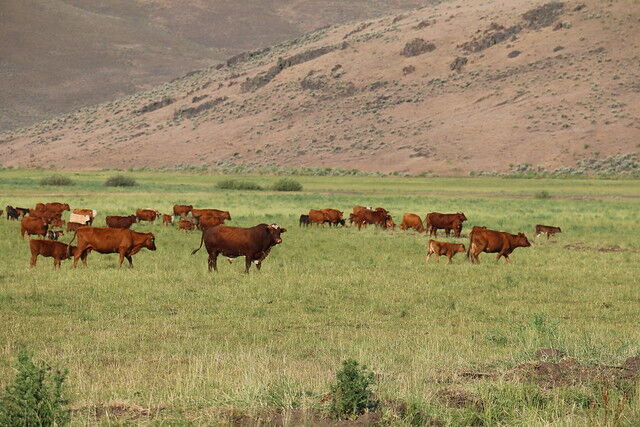
Climate
Beefmaster cattle thrive in hot and humid environments. Their genetics allow them to handle high temperatures effectively and maintain productivity even in extreme heat.
Dry conditions, such as semi-arid or desert-like regions, are also suitable climates for them.
The southern United States, parts of South America, and Australia are some of the ideal areas to raise these cattle.
However, colder climates are not as suitable for them. In such conditions, they require adequate shelter and proper feed to adapt and remain healthy.
Shelter
You need to provide shelter for them based on the environmental conditions.
In hot climates, although they are highly adapted, they still require shade from structures, trees, or simple shelters to prevent heat stress and ensure comfort.
In colder climates, more substantial shelter, such as barns or well-designed structures, is necessary to protect them from freezing temperatures and harsh weather conditions.
Shelter is also important during heavy rains or storms to keep the cattle dry and reduce stress, ensuring their overall well-being.
How many cattle per acre?
You need 3 to 4 acres per cow.
If your pasture is of high quality and abundant, you may need less, somewhere between 2 to 2.5 acres per cow. However, in regions with poorer forage quality or lower rainfall, you may require more than 5 acres per cow.
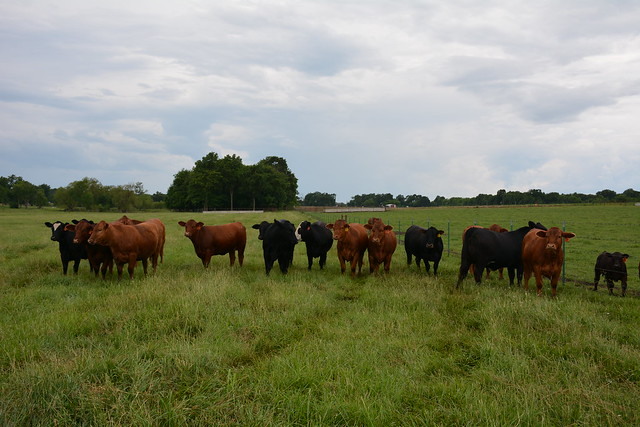
You also need to consider the type of diet you provide for your cattle. Are they 100% grass-fed? If so, you will definitely need more pasture. If you supplement their diet with grains, then you may require less acreage.
Breeding
The most common method for this type of cattle is artificial insemination.
This popular method is not only used for reproduction but also for introducing superior genetics into herds. One advantage of artificial insemination is that you don’t need to own a bull, making it more cost-effective and convenient.
Semen can be purchased from specialized associations, allowing you to produce calves with improved genetics.
Bulls are highly efficient breeders, with a strong drive and high fertility rates. They are often used in crossbreeding programs because of their hybrid vigor, also known as heterosis, which enhances the desirable traits of the offspring.
The females are excellent mothers with strong maternal instincts. They care for their calves well, and their milk production is sufficient to raise healthy young. Additionally, they are known for their ease of calving, which is highly valued by farmers. This is partly due to the manageable size of their calves at birth, reducing complications during delivery.
Beefmaster cattle are adaptable to various breeding schedules, making them suitable for a range of climates and management systems.
You can start breeding them when they are around 18 months old or once they reach at least 65% of their mature weight.
The gestation period for Beefmaster cattle is approximately 283 days, similar to most other cattle breeds. This can vary slightly, usually ranging between 279 and 287 days, depending on factors such as the cow’s individual health, nutrition, and environmental conditions.
Health Issues
This cattle breed are resilient but can still get common cattle diseases.
Why should you raise it?
A purebred bull’s price can range from $5,000 to $15,000, while a purebred cow can cost between $3,000 and $11,000.
Commercial bulls and heifers are priced between $2,000 and $8,000.
Calves are more affordable, with prices ranging from $500 to $2,000.
A&D
Advantages
- Can live in hot, humid, and arid regions.
- Strong maternal instincts and good milk production.
- Reduced birth complications
- Good feed conversion.
- Calm and gentle, making them easy to handle.
- Good meat quality with balanced lean-to-fat ratio and moderate marbling.
- High fertility rates.
- Less veterinary care compared to other breeds.
- Suitable for small farms, homesteads, and commercial farming.
Disadvantages
- Less suited to extremely cold climates.
- Breeding often involves artificial insemination, which require more expertise.
- May grow slower on a 100% grass diet.
- Initial breeding setup can be more complex compared to other breeds.
- More expernsive to purchase.
References
- Beefmasters Breeders United link
- Beefmaster Society link
- United States Department of Agriculture link
Do you have experience with the topic discussed in this article?
Want to improve the information shared here and have practical knowledge on the subject?
Your real-world experience as a farmer or rancher could make a huge difference, and the community will greatly appreciate your contribution.


